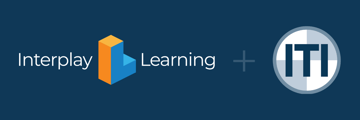Customer Content Authors: A Focus on SCORM 2004 3rd Edition
The adoption of Sharable Content Object Reference Model (SCORM) packages into Learning Management Systems (LMS) is a pivotal aspect of e-learning strategy and a great choice for specific needs that the native LMS authoring tool may not be equipped to handle. The Learning Hub (LMS) prefers SCORM 2004 3rd Edition. This version of SCORM, which precedes the more widely recognized 4th Edition, still boasts significant improvements over its predecessors, particularly in terms of sequencing and navigation capabilities, as well as data tracking precision. This article delves into the critical factors that content developers and administrators should account for when importing custom SCORM packages into the LMS.
Understanding the Nuances of SCORM 2004 3rd Edition
SCORM 2004 3rd Edition marks a significant evolution in the SCORM series, introducing more sophisticated options for course navigation and learner tracking. Despite being succeeded by the 4th Edition, the 3rd Edition remains in use across various LMS platforms, requiring a thorough understanding of its features and limitations.Compatibility and Compliance
The foremost consideration is ensuring that your SCORM content is fully compatible with SCORM 2004 3rd Edition standards.
- SCORM Validation Tools: Utilize tools like the ADL SCORM Conformance Test Suite to validate your content against the SCORM 2004 3rd Edition specifications.
- LMS Compatibility Testing: Test your SCORM packages extensively within the LMS to identify and resolve any compatibility issues, paying close attention to how the LMS interprets and executes the SCORM reporting. Just because SCORM is capable of sending data to the LMS, the LMS may or may not contain all expected data tables in a single report.
Leveraging Sequencing and Navigation Features
SCORM 2004 3rd Edition offers advanced sequencing and navigation controls, allowing for a more customized and effective learning pathway.
- Implement Sequencing Strategies: Design your courses to take advantage of the sequencing rules defined in SCORM 2004 3rd Edition, creating a more engaging and personalized learning experience, however, see next point on simplification as a standard.
- Simplify Navigation Complexity: While SCORM 2004 3rd Edition allows for complex navigation patterns, it’s crucial to balance sophistication with user experience to avoid confusing learners and risking incompatibility.
Enhanced Data Tracking
The improved data tracking capabilities of SCORM 2004 3rd Edition facilitate detailed reporting on learner progress and performance.
- Detailed Interaction Data: Ensure that your content leverages SCORM 2004 3rd Edition's ability to track detailed interaction data, providing insights into how learners engage with the material. NOTE: Some advanced data tracking may require third party tools such as BI Reporting.
- LMS Reporting Capabilities: Collaborate with your LMS support to understand how the platform handles SCORM data, ensuring that the reporting meets your analytical needs, and most importantly, TEST your SCORM prior to implementation.
Technical Development Considerations
Developing SCORM-compliant content that aligns with SCORM 2004 3rd Edition specifications requires specific technical considerations.
- 3rd Party Authoring Tools Compatibility: Choose authoring tools and software that specifically support SCORM 2004 3rd Edition to streamline the development process. Examples of these tools include but are not limited to Storyline, Rise, Articulate, and many more.
- Content Packaging: Pay careful attention to the packaging and manifest file requirements to ensure smooth content import and functionality within the LMS and note that SCORM plays best in the LMS when it is NOT EMBEDED.
Future-Proofing Your SCORM Content
While SCORM 2004 3rd Edition provides a solid foundation for e-learning content, the learning landscape is changing and updating as a constant.
- Update and Maintenance Plan: Develop a strategy for regularly updating and maintaining your SCORM packages to keep the content relevant and functional within the LMS.
- Stay Informed on LMS Updates: Keep abreast of any updates or changes to your LMS that might impact the compatibility or functionality of your SCORM content by our vendor.
What if My Content is AICC format?
You will want to communicate with the author of the content to see if it can be exported in a supported format. At this time, AICC content is not supported by our LMS.
Conclusion
Integrating custom SCORM content into the LMS which is optimized for SCORM 2004 3rd Edition does not mean that you cannot use SCORM 1.2 or other editions of SCORM 2004, but it does mean more extensive testing is required. By focusing on compatibility and maintaining an ongoing dialogue with LMS support at ITI, content developers can ensure that their e-learning materials not only meet technical standards but also deliver meaningful learning experiences. As the e-learning field continues to evolve into xAPI, staying informed and adaptable will be key to maximizing the potential of SCORM content within our LMS (Learning Hub).
